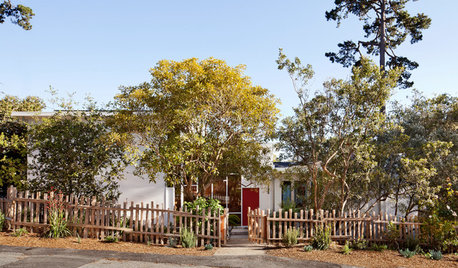Lacking Topsoil & Want to Start to Be Green
wanna_be_green_in_il
15 years ago
Related Stories

DECORATING GUIDESHow to Decorate When You're Starting Out or Starting Over
No need to feel overwhelmed. Our step-by-step decorating guide can help you put together a home look you'll love
Full Story
GARDENING GUIDES6 Steps to Get a Garden Off to a Glowing Start
Grow a lush, balanced garden from an empty patch of yard or neglected landscape spot with these easy-to-follow guidelines
Full Story
GARDENING GUIDESHow to Stop Worrying and Start Loving Clay Soil
Clay has many more benefits than you might imagine
Full Story
CONTRACTOR TIPSContractor Tips: Countertop Installation from Start to Finish
From counter templates to ongoing care, a professional contractor shares what you need to know
Full Story
GARDENING GUIDES10 Easy Edibles for First-Time Gardeners
Focus on these beginner-friendly vegetables, herbs, beans and salad greens to start a home farm with little fuss
Full Story
MIDCENTURY HOMESHouzz Tour: Small Changes Earn a Top Green Rating
Remodeling for energy efficiency and sustainability within a quaint town's codes wins LEED platinum certification for a midcentury home
Full Story
ECLECTIC HOMESMy Houzz: Organic, Airy Home in Brooklyn's Fort Greene
Cherry wood furnishings, fresh houseplants and bold artwork make this New York furniture designer's apartment a standout
Full Story
KITCHEN DESIGNSeeing Green: Some Kitchens Ditch White for Mother Nature’s Neutral
It’s typically the primary color in gardens. Now green is having a moment in the kitchen
Full Story
GREEN DECORATING8 Questions to Help You See Through Green Hype
With the ecofriendly bandwagon picking up some dubious passengers, here's how to tell truly green products and services from the imposters
Full Story
CONTRACTOR TIPSBuilding Permits: What to Know About Green Building and Energy Codes
In Part 4 of our series examining the residential permit process, we review typical green building and energy code requirements
Full StorySponsored






organic2009
Kimmsr
Related Professionals
Allentown Landscape Architects & Landscape Designers · Manorville Landscape Architects & Landscape Designers · Alexandria Landscape Contractors · Anderson Landscape Contractors · Edwardsville Landscape Contractors · Inglewood Landscape Contractors · Las Vegas Landscape Contractors · Nashua Landscape Contractors · St. Louis Landscape Contractors · View Park-Windsor Hills Landscape Contractors · Chicago Driveway Installation & Maintenance · Brenham Swimming Pool Builders · Slidell Fence Contractors · Tacoma Fence Contractors · Tallahassee Fence Contractorsdchall_san_antonio
wanna_be_green_in_ilOriginal Author
billhill
dchall_san_antonio
lou_spicewood_tx